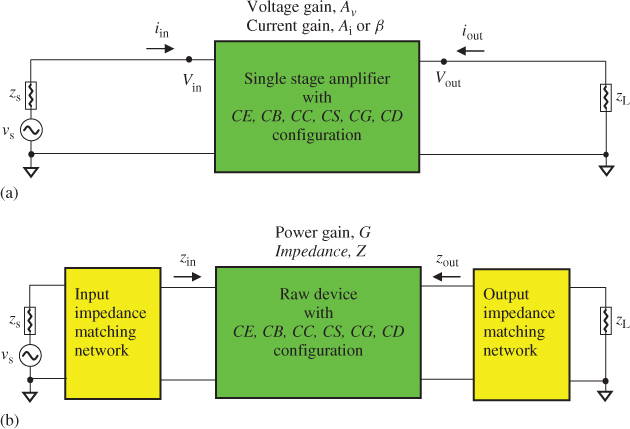Chapter 5
Impedance and Gain of a Raw Device
5.1 Introduction
In electrical science and technology, the single-stage amplifier is almost indispensable. However, its implications in digital circuit design are different from those in RF circuit design. Figure 5.1 shows such a difference.
Figure 5.1 Different viewpoints between single stage amplifier and raw device. (a) A single-stage amplifier in digital circuit design. (b) A single-stage amplifier in RF circuit design.

A single-stage amplifier in digital circuit design consists of a transistor and a couple of passive parts that provide the DC power, DC blocking, and DC bias, and offer an input and an output. Its performance is characterized by the input and output voltages or current, namely, Vin, iin, Vout, iout, in which the voltage and current gain Av and Ai (or β), are of main concern.
A single-stage amplifier in an RF circuit design consists of three portions: the input impedance matching network, the raw device itself, and the output impedance matching network. A single-stage amplifier in the digital realm is, in fact, merely a raw device in the RF realm. A raw device without impedance matching cannot be an independently functioning block because the most important objective of an RF block is its power gain G and not its voltage or current gain. Impedance matching takes priority in order to ensure superior power transport ...
Get RF Circuit Design, 2nd Edition now with the O’Reilly learning platform.
O’Reilly members experience books, live events, courses curated by job role, and more from O’Reilly and nearly 200 top publishers.

